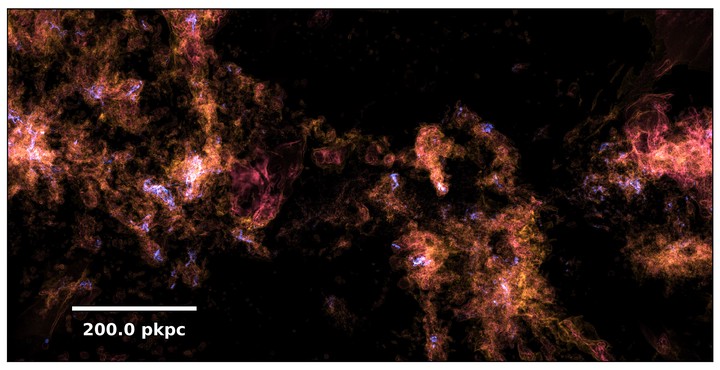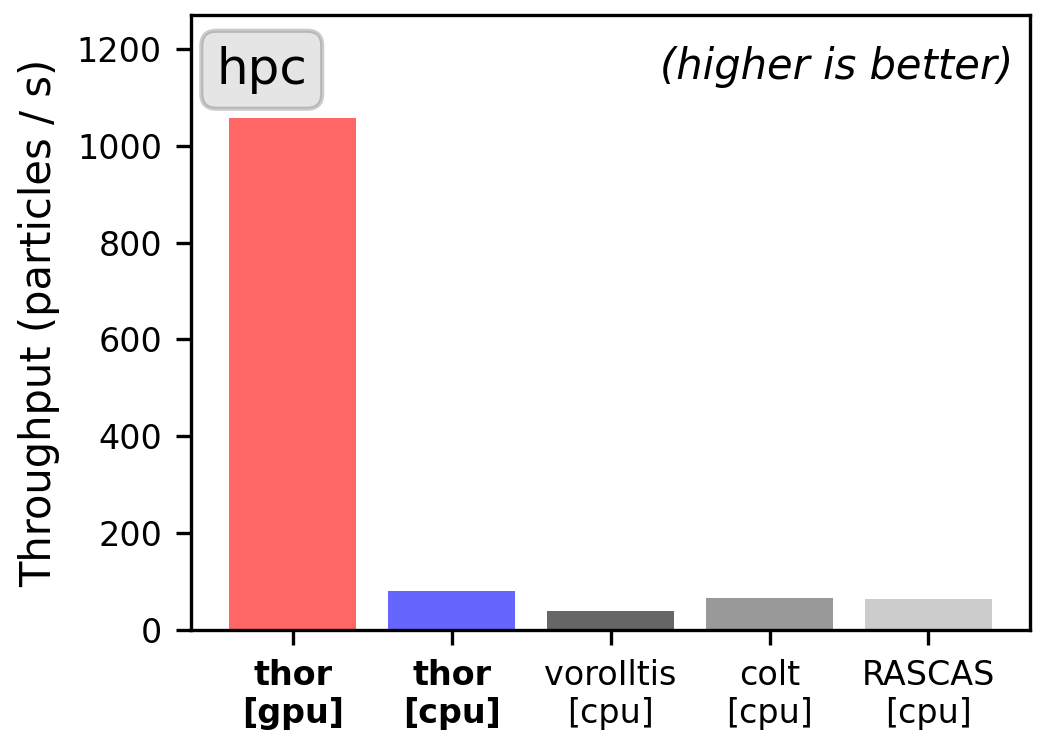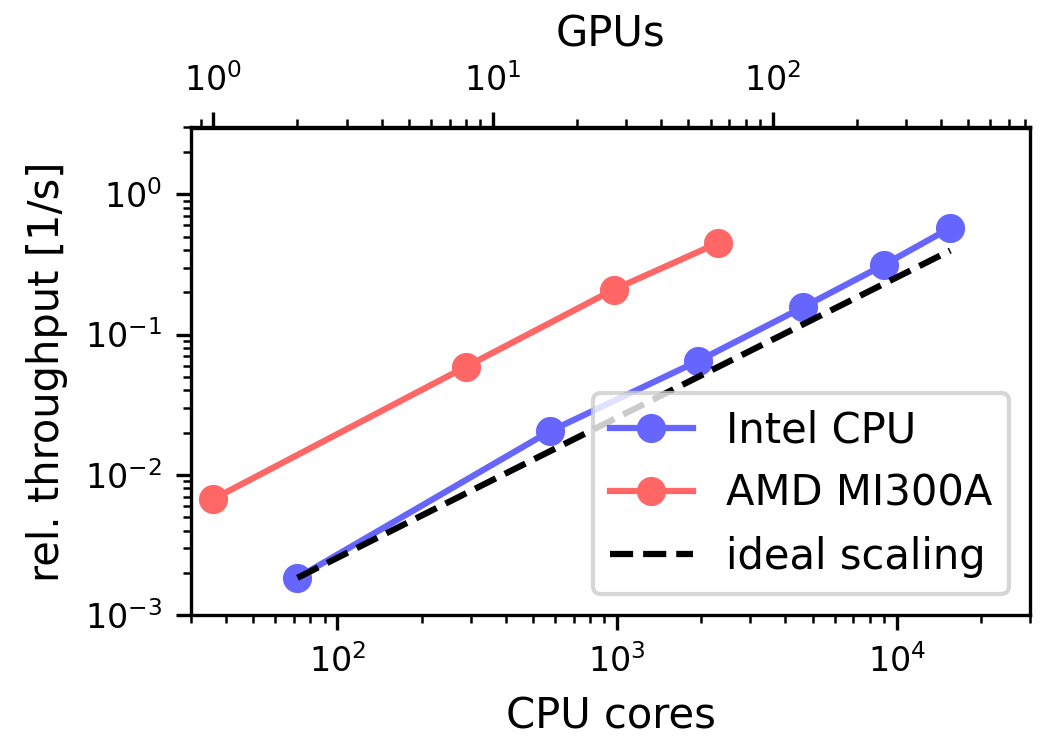thor: a massively-parallel GPU-accelerated MCRT code
 Volume rendering of the temperature field for a massive node in a galaxy formation simulation using thor.
Volume rendering of the temperature field for a massive node in a galaxy formation simulation using thor.
Emission and absorption line features are important diagnostics for the physics underlying extragalactic astronomy. The interpretation of observed signatures involves comparing against forward modeled spectra from galaxy formation simulations as well as more simplified geometries, while including the complex scattering radiative transfer (RT) of resonant emission lines. We introduce thor, a modern C++ radiative transfer code focused initially on resonant emission lines. thor is a high-performance, distributed memory MPI-parallel, multi-target code, running on CPUs, GPUs and other accelerators, yielding large $\sim 10-50\rm{x}$ speed-ups compared to previous CPU-only codes.


To be published. Pre-print available.
